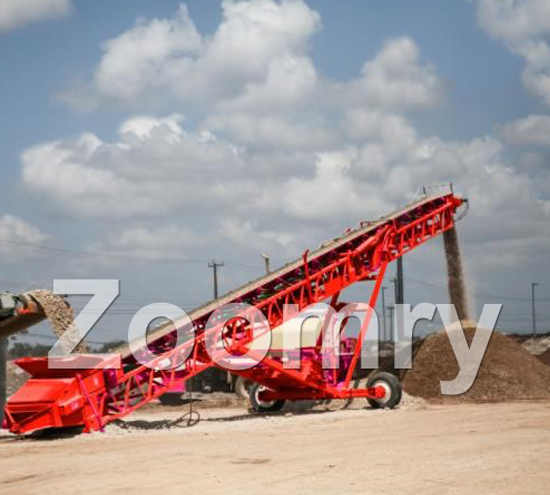Grasshopper conveyors, also known as mobile transfer conveyors or jump conveyors, are versatile and flexible material handling solutions used in various industries to efficiently move bulk materials from one point to another. They are especially well-suited for applications where traditional fixed conveyors may not be practical due to changing operational requirements or limited space. This guide provides essential information to consider when buying grasshopper conveyors for your material handling needs.
Key Considerations When Buying Grasshopper Conveyors
1. Application and Material Type: Determine the specific materials you need to convey. Grasshopper conveyors can handle a wide range of materials, including aggregates, ores, grains, and more.
2. Mobility and Flexibility: Grasshopper conveyors are designed to be easily moved and set up at different locations. Consider the mobility features, such as self-propelled options, ease of transportation, and quick setup.
3. Length and Reach: Choose a grasshopper conveyor with an appropriate length and reach that suits your operational needs. Longer conveyors can cover larger distances, while adjustable lengths offer flexibility.
4. Capacity and Throughput: Evaluate the conveyor's capacity and throughput to ensure it can handle the required volume of material within your desired time frame.
5. Adjustable Height: Some grasshopper conveyors offer adjustable height settings, allowing you to match the conveyor's height to the loading and unloading points.
6. Belt Width and Type: Select the appropriate belt width and type based on the size and characteristics of the materials you'll be conveying.
7. Power Source: Grasshopper conveyors can be powered by electricity, diesel engines, or hydraulic systems. Choose a power source that aligns with your operational setup.
8. Portability and Transport: Consider the ease of transporting the grasshopper conveyor between different sites. Features like foldable conveyors and transport wheels can make the process smoother.
9. Durability and Construction: Look for robust construction and quality materials to ensure the conveyor can withstand the demands of your specific application and environment.
10. Safety Features: Prioritize safety by selecting conveyors with features such as emergency stops, safety guards, and proper lighting.
11. Maintenance and Serviceability: Choose conveyors with accessible components and easy maintenance procedures to minimize downtime. 12. Manufacturer Reputation: Research and choose a reputable manufacturer known for producing reliable and high-quality grasshopper conveyors.
Benefits of Grasshopper Conveyors
1. Versatility: Grasshopper conveyors are versatile and can be used in a wide range of industries, including mining, construction, agriculture, and more.
2. Flexibility: They offer flexibility in material handling due to their adjustable length, mobility, and ability to handle various materials.
3. Space Saving: Grasshopper conveyors are often used in situations where space is limited or where permanent conveyors might not be practical.
4. Quick Setup: They can be set up quickly, allowing for efficient operations at multiple locations.
5. Cost-Effective: Grasshopper conveyors can offer cost savings by eliminating the need for multiple fixed conveyors and infrastructure.
Conclusion
Grasshopper conveyors provide a practical solution for efficient material handling in various industries. When buying a grasshopper conveyor, carefully consider factors such as the application, mobility, capacity, and safety features. By selecting the right conveyor for your needs, you can enhance productivity, improve operational efficiency, and achieve seamless material transfer between different points.

 ZOOMRY
ZOOMRY


